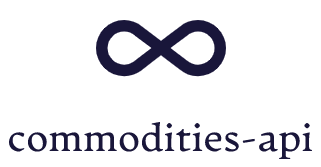Wheat is a major agricultural commodity with a significant impact on the global economy. The United States, Russia, China, India, France, Turkey, Pakistan, Argentina, Canada, and Ukraine are the world’s top producers of wheat. These countries account for approximately 70% of global production, which is influenced by factors such as global economic conditions and consumer preferences.
Wheat is a commodity that is traded on the futures market. This means that people buy and sell wheat contracts at a specified price at a specified time in the future. Traders use these futures contracts to manage their exposure to fluctuations in the price of wheat.
Investing in wheat futures involves several risks. One risk is that if you buy at a high price and then sell at a lower price after the contract expires, you can lose money. If there aren’t enough buyers available at the time, you run the danger of not being able to sell your contract. Therefore, having the appropriate information is crucial to avoiding risks and making profitable investments. The best tools at our disposal are APIs, or in this case, wheat futures APIs.
Wheat futures APIs offer real-time data on wheat futures. However, not all of the wheat futures APIs that are available online are reliable or simple to use. Consequently, we advise using the commodities API if you’re looking for a reliable API for wheat futures.
Commodities API
The commodities API provides historical and real-time data for several commodities, including wheat futures. It has several endpoints that include the convert endpoint, the time-series data endpoint, the fluctuation data endpoint, the latest rates endpoint, and the historical rates endpoint. This last endpoint can be used to track long-term trends in the market and identify potential investment opportunities. Overall, using its various endpoints, you can stay up-to-date on market trends and make more informed decisions.
Developers can greatly benefit from this API. They can provide their clients with quick and dependable solutions without having to start from scratch with an API. Additionally, the commodities API returns data in JSON format, which is supported by a large number of well-known programming languages. The commodities API can therefore be easily integrated into any current software or website.
Making use of the Commodities API
If you’re searching for a simple tool that allows you to track historical data on wheat futures and other commodities, this API is a wonderful option. To gain access, all you have to do is register for an account on the commodities API website. Then, select the base currency, symbols, and endpoint that best fulfill your request. Finally, click “run” to start the API call. In a couple of seconds, you’ll have all the information.
As an illustration, when we utilized the “Latest rates” endpoint, the base currency “USD,” and the symbol “WHEAT,” we got the following response:
{"data":{"success":true,"timestamp":1683256620,"date":"2023-05-05","base":"USD","rates":{"WHEAT":0.0038075946282455},"unit":{"WHEAT":"per metric ton"}}}The answer states that one US dollar is equal to 0.0038075946282455 metric tons of wheat.
Overall, the commodities API is one of the best options for getting historical data on any commodity. It allows you to make informed trading decisions that can later translate into very good revenues. Plus, this API is easy to integrate into your existing systems, and it’s updated daily, so you can always get the most up-to-date information. Finally, it has a large variety of subscription options with up to 100,000 API request caps and 60-second update intervals. But if those still do not meet your needs, they also have a custom plan for you!



